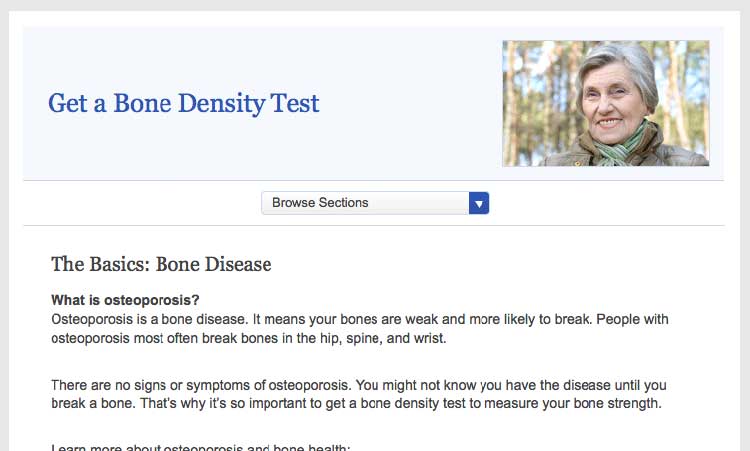3.2 Use meaningful headings.
When users scan webpages, they often only read the headings to figure out if the content is relevant to them. It’s important to make your headings as specific as possible24,30—try to include keywords to help users find the information they need.
Including keywords in headings also makes it more likely that search engines will show your content in search results. Search engines show sites where keywords appear in the web address, title, page headings, and links before they show websites with keywords that only appear in content.
Start headings with verbs when you can. This helps set you up to write actionable content.
Use subheadings.
Adding a subheading, or “teaser” text, underneath each heading can give the user additional clues about what to expect from your content.
Main heading: Get Active
Subheading: Aim for 2 hours and 30 minutes of activity a week.
Consider question headings.
When appropriate, try using questions as headings.24 Use “I” and “me” to reflect the voice of the user.
For example, when discussing mammograms, common questions include:
- How will this benefit me?
- How much does it cost?
- What happens if the doctor finds something wrong?
- How often do I need to get tested?
- Does it hurt?
- Are there any risks associated with the test?
- What if I don’t have time?
Place headings properly.
Make sure your headings don’t “float” on the page (floating happens when there’s too much white space above and below the heading). Make it clear which chunk of text the heading corresponds to—leave more space above a heading than between the heading and the text that comes after it.24
On this healthfinder.gov webpage, information about osteoporosis is organized using questions as headings. There’s more space before the heading than after, creating clear “chunks” of text.

Source: https://health.gov/myhealthfinder/topics/doctor-visits/screening-tests/get-bone-density-test